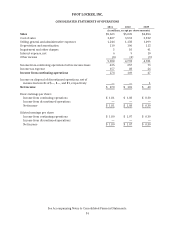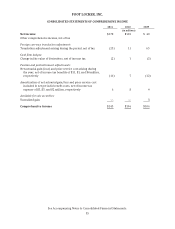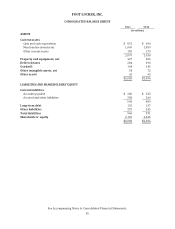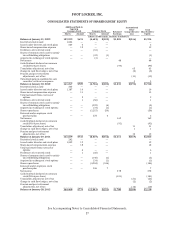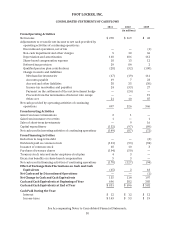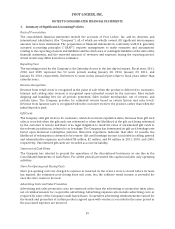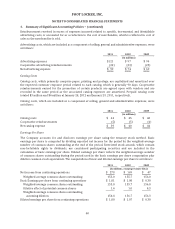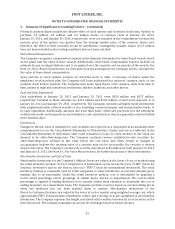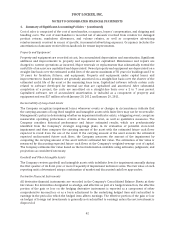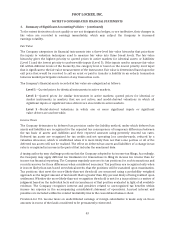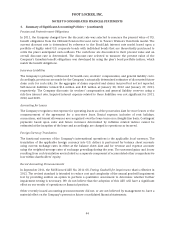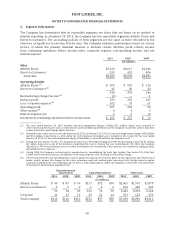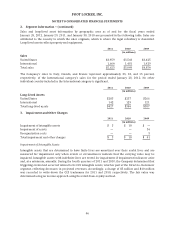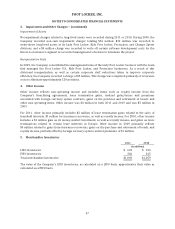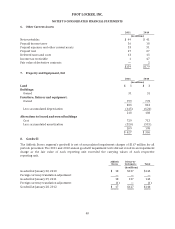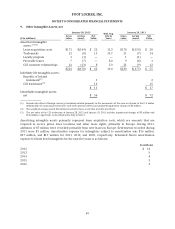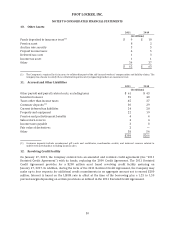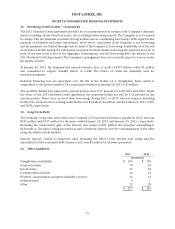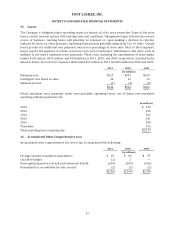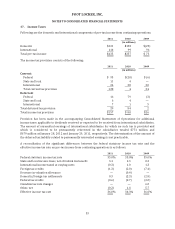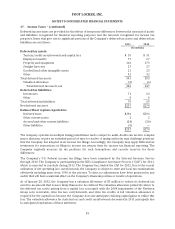Foot Locker 2011 Annual Report Download - page 64
Download and view the complete annual report
Please find page 64 of the 2011 Foot Locker annual report below. You can navigate through the pages in the report by either clicking on the pages listed below, or by using the keyword search tool below to find specific information within the annual report.FOOT LOCKER, INC.
NOTES TO CONSOLIDATED FINANCIAL STATEMENTS
1. Summary of Significant Accounting Policies − (continued)
Pension and Postretirement Obligations
In 2011, the Company changed how the discount rate was selected to measure the present value of U.S.
benefit obligations from the Citibank Pension Discount curve to Towers Watson’s Bond:Link model. The
current discount rate is determined by reference to the Bond:Link interest rate model based upon a
portfolio of highly rated U.S. corporate bonds with individual bonds that are theoretically purchased to
settle the plan’s anticipated cash outflows. The cash flows are discounted to their present value and an
overall discount rate is determined. The discount rate selected to measure the present value of the
Company’s Canadian benefit obligations was developed by using the plan’s bond portfolio indices, which
match the benefit obligations.
Insurance Liabilities
The Company is primarily self-insured for health care, workers’ compensation, and general liability costs.
Accordingly, provisions are made for the Company’s actuarially determined estimates of discounted future
claim costs for such risks, for the aggregate of claims reported and claims incurred but not yet reported.
Self-insured liabilities totaled $14 million and $15 million at January 28, 2012 and January 29, 2011,
respectively. The Company discounts its workers’ compensation and general liability reserves using a
risk-free interest rate. Imputed interest expense related to these liabilities was not significant for 2011,
2010, and 2009.
Accounting for Leases
The Company recognizes rent expense for operating leases as of the possession date for store leases or the
commencement of the agreement for a non-store lease. Rental expense, inclusive of rent holidays,
concessions, and tenant allowances are recognized over the lease term on a straight-line basis. Contingent
payments based upon sales and future increases determined by inflation related indices cannot be
estimated at the inception of the lease and accordingly, are charged to operations as incurred.
Foreign Currency Translation
The functional currency of the Company’s international operations is the applicable local currency. The
translation of the applicable foreign currency into U.S. dollars is performed for balance sheet accounts
using current exchange rates in effect at the balance sheet date and for revenue and expense accounts
using the weighted-average rates of exchange prevailing during the year. The unearned gains and losses
resulting from such translation are included as a separate component of accumulated other comprehensive
loss within shareholders’ equity.
Recent Accounting Pronouncements
In September 2011, the FASB issued ASU No. 2011-08, Testing Goodwill for Impairment, that is effective in
2012. The revised standard is intended to reduce cost and complexity of the annual goodwill impairment
test by providing entities an option to perform a qualitative assessment to determine whether further
impairment testing is necessary. We do not believe that the adoption of this ASU will have a significant
effect on our results of operations or financial position.
Other recently issued accounting pronouncements did not, or are not believed by management to, have a
material effect on the Company’s present or future consolidated financial statements.
44


